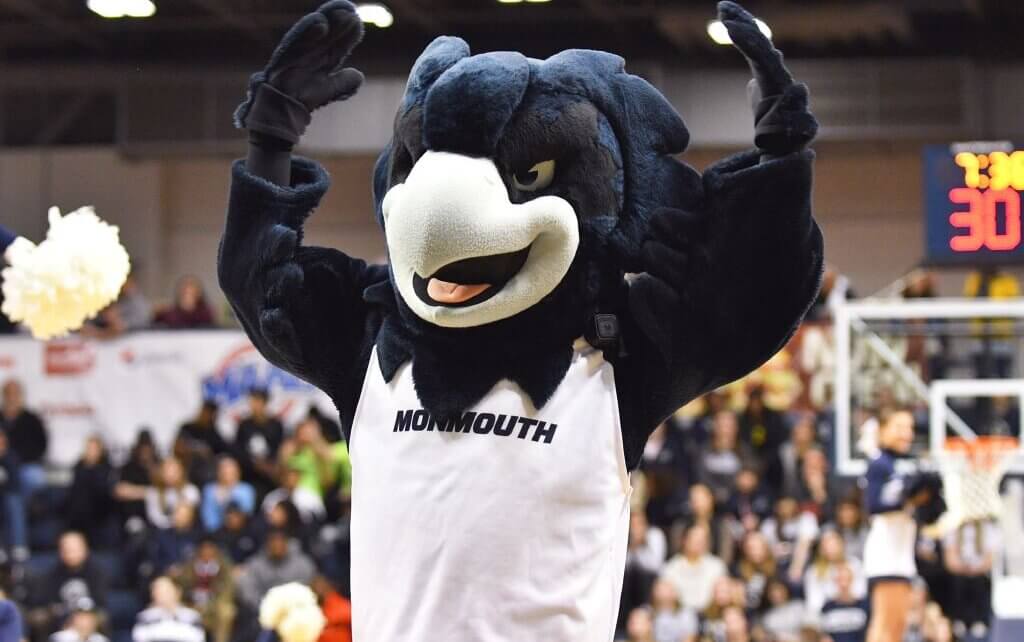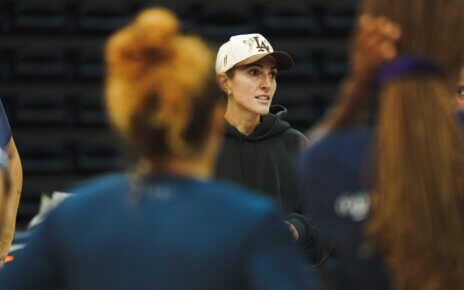Monmouth University announced that the school’s athletic teams will be leaving the Metro Atlantic Athletic Conference (MAAC) to join the Colonial Athletic Association (CAA) in fall 2022 in an email from President Patrick Leahy on Jan. 25.
The CAA approached Monmouth in August to gauge the University’s interest in joining an expanded league. It was quickly decided that switching conferences would be beneficial in order to enhance Monmouth’s academic prestige through associations with universities with super-regional and national reputations, increase recruitment opportunities for students and student-athletes in a new market, and offer enhanced opportunities for student-athletes in a more competitive athletic conference. The decision was unanimously approved by the Board of Trustees.
“All of this translates into much greater exposure for Monmouth University,” wrote Leahy. “Over the years we have developed strong relationships with the MAAC, Big South, and America East member institutions, and we will miss those professional relationships. But, there were no hesitations with leaving the MAAC.”
Leahy’s initial email announcing the transition did not mention the $1.5 million Monmouth will have to pay between MAAC exit fees and CAA entrance fees.
“There are always exit and entrance fees in moving conferences,” explained Leahy. “The University will have to pay these one-time fees to make this transition. However, the fees will be payable over multiple years, lessening the burden on the University. Since we envision the move to the CAA to be a decades-long decision, we will be able to amortize these fees over all those years.”
“I’m really excited to see Monmouth University move on to the CAA. I think it’s worth the investment,” said John Spinelli, a senior political science student. “Joining this new conference gives Monmouth the opportunity to become more of a household name along the East Coast. I wish the best of luck to our athletes as they represent Monmouth and New Jersey in this new league, and I can’t wait to root for them as an alum.”
“I think it was an interesting investment by Monmouth, but I’m excited to see how we do in a more competitive division,” said Alyssa Torres, a senior biology student. She noted that her favorite sport to watch is basketball and that she is eager to see how the team does next year as she supports them as an alumna.
Other students feel as though the cost of the transition may not be entirely justifiable. “The cost itself seems like an exorbitantly expensive investment that only really benefits students involved in the athletic community on campus,” said junior chemistry student Julian Rebelo, who feels that the money could be better allocated to academic areas at Monmouth.
Although $1.5 million might seem to some like a hefty investment to change athletic conference, once those fees are paid off, annual membership fees in the CAA will be lower than the fees that were previously paid to the MAAC, Big South, and America East each year.
Leahy also emphasized that athletic associations gained from this transition will enhance Monmouth’s academic reputation. The current conferences do not have any formal academic collaborations, so moving to the CAA is both athletically and academically beneficial.
Other members of the CAA include Northeastern, Hofstra, Stony Brook, Drexel, Delaware, Towson, William & Mary, Elon, UNC Wilmington, College of Charleston, Hampton, and North Carolina A&T. Although Monmouth is generally lesser-known compared to some of the other CAA schools, Leahy is confident that the University will fit right in and will serve as viable competitors in this new conference.
“This conference change to the CAA is not an athletics-only enhancement, though it does take our athletics program to a whole new level. More important than that, this conference change re-positions Monmouth as a major university on the east coast, shining a spotlight on the incredible collaboration that happens day-in and day-out between our first-rate faculty and our exceptionally talented students,” concluded Leahy.




